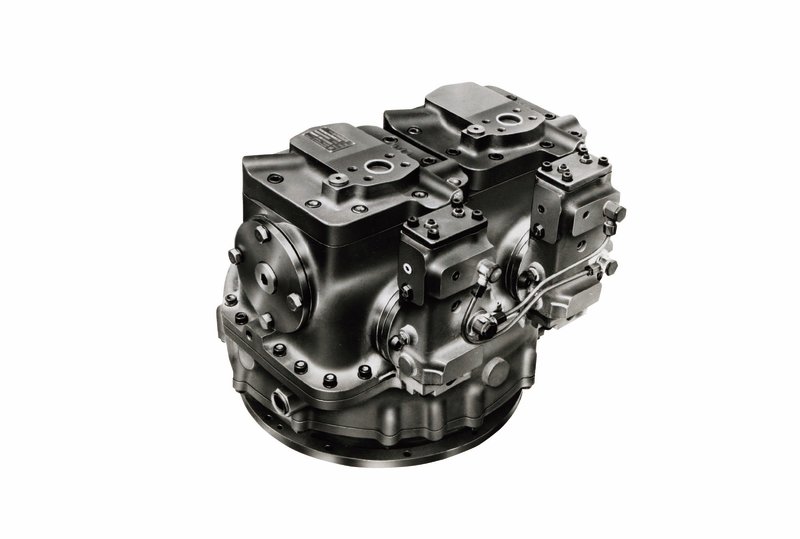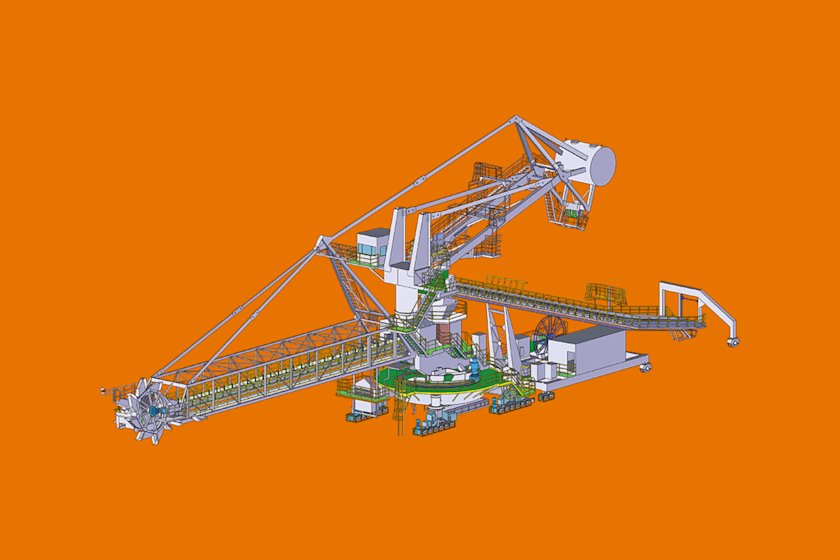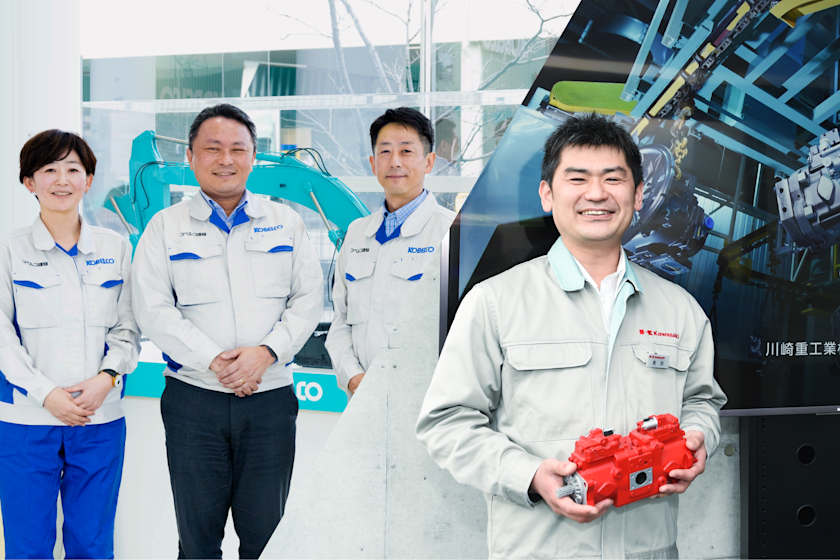Hydraulic Pump

Japanese-made hydraulic excavators have played a leading role in construction sites around the world.
Ever since the first home-grown hydraulic excavator was developed in Japan, Kawasaki has underpinned the construction machinery industry with its hydraulic pumps—the heart of hydraulic equipment— that boast outstanding performance.

KV Series -Foundation of Hydraulic Machinery Industry

The KV Series was developed and used for Japan's first home-grown hydraulic excavator. The working pressure was 21 MPa. The chief design engineer at the time recalls: "It took one year before it was fully ready for use. We competed against U.S. competitors’ products in a 500-hr non-stop operation test at the riverside. Kawasaki’s pump emerged as the winner in this competition."
NV Series -Dawn of Further Innovation to Come

The NV Series, released in 1981, offered higher pressure and higher speed in a smaller frame. This was achieved by optimizing the piston shape, developing a new material for the sliding surface, joining two pumps in a tandem arrangement, and other improvements. In the end, the working pressure was brought up to 32 MPa, while achieving high reliability at the same time.
K3V Series -Significant Reduction in Number of Parts

The K3V Series, developed in 1988, was built on the innovation of the NV Series, further enhancing its reliability and productivity, and taking standardization a step further. It managed to reduce the number of parts by 30% as part of an effort to make it more price competitive. This helped Kawasaki to step out to the world stage. The working pressure ultimately reached as much as 38 MPa.
K7V Series -Optimum Environmental Performance at High Output Density

The K7V Series took the eco-friendly features passed on from the K3V to the K5V and gave them a boost. It achieved a maximum working pressure of 40 MPa, and an output level 20% greater than that of the K3V while the weight remained the same. It is also 3% more efficient than the previous model.
Hydraulic excavators are star players on the construction field, and Kawasaki’s hydraulic pumps are adopted in many excavators across the world thanks to their high performance. Features such as high operability, high efficiency, low noise and high reliability found in Kawasaki’s hydraulic pumps are based on its wealth of experience and advanced technology.
The first hydraulic excavator that was made entirely in Japan was actually built not so long ago, in 1965. The hydraulic pump for this excavator was developed by Kawasaki. Hydraulic pumps serve as the heart, so to speak, of hydraulicexcavators, supplying hydraulic oil to motors, cylinders, and other components.
Kawasaki developed the KV Series, which was adopted in the first hydraulic excavator, in 1968, after which the hydraulic pump business took off.
The evolution of hydraulic pumps can be summarized in one phrase: increasing power density. The goal is to provide a large volume of hydraulic fluid at high pressure and high speed, while making the pump itself smaller. In the KV Series, Kawasaki aimed to develop a swash plate pump that anticipated an era of ultra-high pressure operation of 50 MPa.A swash plate pump is a type of pump in which the piston slides along the surface of a swash plate in a reciprocating motion to send out hydraulic fluid.
With the NV Series, which came out in 1981, the angle of the swash plate was made steeper to enable high-pressure, high speed motion. The parts were further refined down to the micron level to achieve increased output density.
The latest K7V Series boasts an output density approximately 10 times greater than that of the KV Series. Today, Kawasaki has become the leading player in the hydraulics field.









